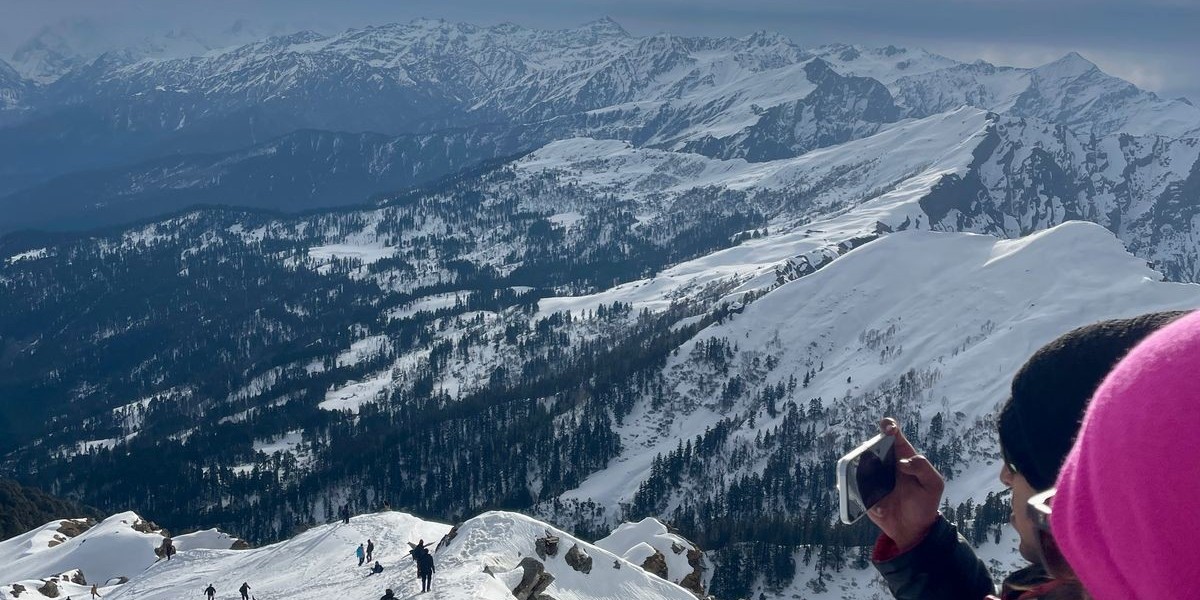Do You Really Need a Guide to Go on the Hampta Pass Trek?
Planning to hike the majestic Hampta Pass? Before lacing up your boots and heading into the wild, it’s essential to ask yourself a key question: “Do I need a guide for the Hampta Pass Trek?”
The Hampta Pass is far more than a simple hike through the hills—whether you’re a seasoned trekker or this is your first Himalayan journey. It’s an unpredictable adventure filled with challenges. From snowy valleys and swift river crossings to high-altitude climbs and rapidly changing weather, this trek demands both preparation and, often, the support of an expert guide.
This safety guide from TrekYaari covers everything you need to know to stay safe and decide whether hiring a guide is the right choice for your trek.

Quick Overview of the Hampta Pass Trek
Maximum Altitude: 14,000 feet (4,270 m)
Total Distance: Approximately 26 kilometers
Duration: 4 to 5 days
Difficulty Level: Moderate to Difficult
Location: Himachal Pradesh
Best Season: June to September
Why Safety Should Be Your First Concern
Though the trek begins gently—with meadows and peaceful forests—it becomes increasingly serious as you approach the high-altitude pass. Here’s why this trek can be both exciting and risky:
Altitude Sickness (AMS): At 14,000 feet, the chances of developing AMS are real. A guide can spot the early signs and respond quickly to prevent serious issues.
Unpredictable Weather: Sudden downpours, June snow, or chilly winds in September can make the trail slippery and visibility poor.
River Crossings: Streams like Rani Nallah can be ice-cold and dangerously fast. Without local knowledge, misjudging the current can be hazardous.
Trail Confusion: While some parts of the trail are marked, areas with glaciers or rocky patches can be difficult to navigate without help.
Do You Really Need a Guide?
Let’s get straight to it. Although the Hampta Pass Trek is often recommended for beginners, TrekYaari always advises hiring a certified guide. Here’s why it makes a big difference:
1. Prepared for Emergencies
Professional guides are trained to handle altitude sickness, injuries, and sudden weather changes. They carry essential supplies like first-aid kits, oxygen cylinders (if needed), and communication devices.
2. Reliable Navigation
In sections where the trail is hidden by snow or fog, experienced guides know the best and safest routes—especially critical near the pass.
3. Local Knowledge
Guides enhance your trek by pointing out local herbs, hidden waterfalls, and the safest river crossing spots that you’d likely miss on your own.
4. Group Management
Guides keep everyone moving at a steady pace, ensuring no one gets over-exhausted or left behind. They also provide motivation and build a sense of camaraderie among trekkers.
5. Permit Handling
Yes, forest and camping permits are mandatory. With TrekYaari, your guide handles all the paperwork so you can focus on the experience.
When Can You Consider Trekking Without a Guide?
While we recommend going with a guide, seasoned trekkers with prior high-altitude experience, proper equipment, and thorough knowledge may choose to go unguided. However, the risks—especially early in June (due to snow) and late in September (due to unpredictable weather)—are still significant.
TrekYaari Tip: If you’re set on trekking solo, inform local villagers, carry a GPS device, and avoid trekking during extreme weather windows.
TrekYaari’s Safety Commitment on the Hampta Pass Trek
At TrekYaari, we make sure your trek is as safe as it is thrilling. Here’s what we do to ensure that:
Certified Trek Leaders: All our guides are first-aid certified and trained in wilderness survival.
Medical Equipment: We carry essentials like first-aid kits and pulse oximeters to manage AMS and minor injuries.
Emergency Evacuation: We coordinate with local rescue teams and authorities for swift action if required.
Pre-Trek Orientation: Before the trek begins, we help prepare you mentally and physically for the journey ahead.
Weather Tracking: We constantly monitor weather updates and adjust the plan accordingly for your safety.
How to Stay Safe on the Hampta Pass Trek
Acclimatize Properly: Spend time in Manali to adjust to the altitude. Avoid alcohol and rest well.
Stay Hydrated: Drink water frequently, even if you’re not thirsty.
Dress in Layers: The weather can shift from bright sunshine to snowfall within an hour.
Listen to Your Body: Don’t push beyond your limits—rest when needed.
Trust Your Guide: Their instructions are for your safety, not to slow you down.
Respect the Environment: Carry your waste back. Keep the trail clean and beautiful.
Final Thoughts: Smart Trekking Is Safe Trekking
The Hampta Pass Trek offers unmatched beauty—from glacial landscapes and river valleys to the thrill of walking among the clouds. But like any high-altitude trek, it demands caution, planning, and often, guidance from an expert.
So, do you really need a guide for the Hampta Pass Trek? If you want a secure, seamless, and unforgettable experience—the answer is a definite yes.
When you trek with TrekYaari, you're not just walking a trail. You’re exploring the Himalayas alongside seasoned professionals who know the terrain, understand the risks, and ensure that your journey is safe and exceptional.
Ready to explore Hampta Pass?
Book your Hampta Pass Trek with TrekYaari today and let us handle the safety—so you can focus on the magic of the mountains.
? Check out Packages and Dates








